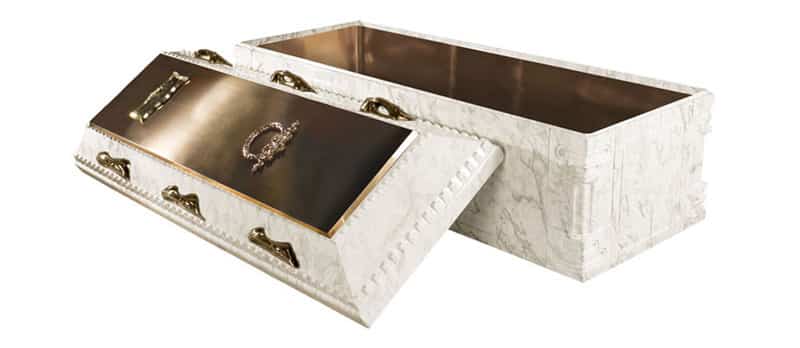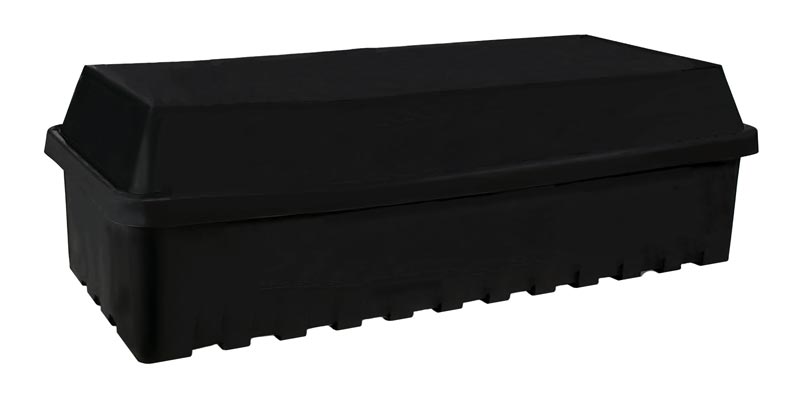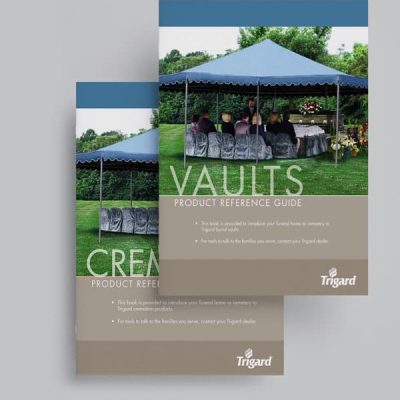If you’ve ever been to a graveside service in a cemetery, you may have noticed the large concrete box the casket goes in before it goes into the ground. In the funeral industry, these concrete boxes are often referred to as burial vaults.
There are a few different types of vaults available across the country. The type of burial vaults offered by a funeral home is often determined by the topography and other geographical characteristics of the region.
So how much do burial vaults weigh? And what influences the weight of a burial vault?
Each type is made of a different material causing the weights to vary. The different materials include concrete, steel, and plastic.
Concrete Burial Vaults
This is the most common type of vault offered in most regions of the country because of its level of sustainable protection and customization options. Concrete burial vaults usually start off weighing at least 2,000 lbs.
Variances in concrete aggregate and manufacturing methods at a local level may cause weights to vary slightly, but these vaults must weigh enough so that the rising water table doesn’t force them upward, out of the ground.

Because of the heaviness of concrete, special trucks are used to transport concrete vaults from the manufacturer to the cemetery, and once the vault arrives at the cemetery, special carts are used to move the vault from the truck to the graveside.
Since concrete vaults can be quite cumbersome to move, they can be difficult to use in cemeteries that are rugged or sloping.
Steel Burial Receptacles
Burial receptacles can also be made entirely of metal – most commonly steel. Depending on the gauge (thickness) of the metal used, steel burial receptacles can weigh anywhere from 350 lbs to 800 lbs.
Because they are lighter weight, metal receptacles can be moved easier across rough terrain or up steep inclines making them more popular in mountainous regions of the United States. Strength is often sacrificed to achieve a lighter weight.
Plastic Burial Receptacles
Some burial receptacles are made entirely of plastic, weighing only 100 lbs to 200 lbs. These are commonly referred to as “air seals” because of the way the casket is sealed inside. If you turn an empty glass upside down, it creates a bubble within the glass. Air seals work similarly, with the tension the bubble causes holding the lid of the vault to the base.

The drawback is this makes the box extremely buoyant. The strength of plastic only is also a concern, however, these vaults work well in rough terrain and areas where a rising water table is not an issue.
In Conclusion
The weight of a burial vault varies greatly based on the manufacturer and the material the vault is made of. Concrete burial vaults are generally the heaviest and start at around 2,000 lbs. Steel burial receptacles usually range between 350 lbs to 800 lbs based on the thickness of the metal so they’re easier to transport than concrete. Finally, plastic burial receptacles (or made of polymer) are the lightest at only 100 lbs to 200 lbs but are less durable than other options.
Only lined, sealed and warranted concrete vaults can be called “burial vaults”, according to the NCBVA. Concrete vaults lined with plastic are the only ones that fulfill all 3 of these requirements. Steel and plastic burial receptacles do not legally qualify to be called burial vaults.
Work with an Industry Leader
Trigard provides industry leading casket protection for families, funeral homes, and cemeteries throughout the United States.
Individuals and families may purchase Trigard Vaults for themselves or their loved ones by finding a local dealer here.
If you are a funeral director and would like to provide Trigard products to your customers, please become a dealer here.
If you are a vault dealer and are interested in pouring and selling Trigard Vaults for local cemeteries and funeral homes, please become a dealer here.
Resource: Burial Vault Dimensions by Trigard








2 Responses
Looking at replacing two concrete burial vaults which are a different brand. Questions: (1) Is the Trigard vault using a water impervious liner which is polystyrene or is it a butyl compound? – a thermoplastic thermoformed liner? How is it bonded to the concrete surface and with what is it bonded? Is there a butyl tape seal in the groove in the cover? What does the seal in the cover consist of and what is it supposed to bond to for a seal face on the sealing face of the base? How long do these sealing compounds last before they crack or craze? Is it an indefinite amount of time meaning we do not really know? What is the warranty term in years on the seals and the water impervious liner? Is this an ari tight seal an liner as butyl is supposed to be? Lastly: What in service seal integrity verification / Quality assurance test does Trigard use or recommend for testing a suspect seal in an existing as built burial vault purchased by a customer and in use? Need to verify the integrity of the seal as installed, non-destructive test. Thanks. You may call me a t 920-779-6186 to relay your answers.
Thanks for the great questions, Bob! We will be reaching out to you shortly!